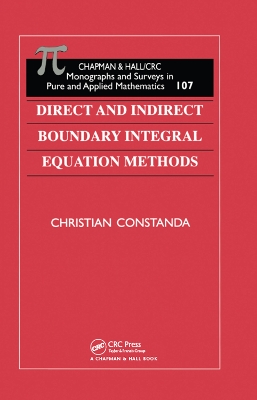The computational power currently available means that practitioners can find extremely accurate approximations to the solutions of more and more sophisticated mathematical models-providing they know the right analytical techniques. In relatively simple terms, this book describes a class of techniques that fulfill this need by providing closed-form solutions to many boundary value problems that arise in science and engineering.
Boundary integral equation methods (BIEM's) have certain advantages over other procedures for solving such problems: BIEM's are powerful, applicable to a wide variety of situations, elegant, and ideal for numerical treatment. Certain fundamental constructs in BIEM's are also essential ingredients in boundary element methods, often used by scientists and engineers.
However, BIEM's are also sometimes more difficult to use in plane cases than in their three-dimensional counterparts. Consequently, the full, detailed BIEM treatment of two-dimensional problems has been largely neglected in the literature-even when it is more than marginally different from that applied to the corresponding three-dimensional versions.
This volume discusses three typical cases where such differences are clear: the Laplace equation (one unknown function), plane strain (two unknown functions), and the bending of plates with transverse shear deformation (three unknown functions). The author considers each of these with Dirichlet, Neumann, and Robin boundary conditions. He subjects each to a thorough investigation-with respect to the existence and uniqueness of regular solutions-through several BIEM's. He proposes suitable generalizations of the concept of logarithmic capacity for plane strain and bending of plates, then uses these to identify contours where non-uniqueness may occur. In the final section, the author compares and contrasts the various solution representations, links them by means of boundary operators, and evaluates them for their suitability for
- ISBN13 9781000716702
- Publish Date 16 January 2020 (first published 31 March 1999)
- Publish Status Active
- Publish Country GB
- Publisher Taylor & Francis Ltd
- Imprint Chapman & Hall/CRC
- Format eBook
- Pages 216
- Language English
